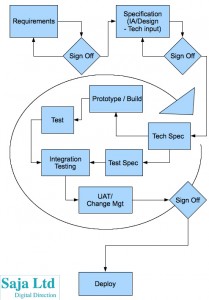I am a woman of many contradictions, my husband will testify to this willingly! When we got married in May I wanted it to be classy & stylish with stunning scenic photos but I don’t like getting dressed up and don’t like being in photos; I work in Digital Media but I am not a fan of gathering gadgets and gizmos & have an inbuilt distrust of sharing information online (I blame too much knowledge!); I am a fussy eater in that there are some foods that just disagree with me but I love fine food and am a passionate cook; and if they are not good enough examples of contradictions for you then how about: I am a climber & love being in the mountains but I’m terrified of heights.
 The latest contradiction I’ve encountered is surrounding my dislike of shopping. I’ve never been a great person for busy crowded shopping centres, or parading up and down high streets browsing for things that I didn’t know I wanted let alone needed! I find I get wound up by the constant changes in temperature and claustrophobic stores, and I can never locate the items I may be looking for if I do venture towards making a purchase. Usually this is very good for keeping money in my pocket but periodically it can be distressing such as when I really need a new pair of shoes as the old pair is starting to wear through, or at this time of year (xmas) when I need to buy Christmas presents. You see the trouble is that though online shopping is on the boom, and the advent of web phones and tablet devices means that you can do your shopping whilst on the train, I really want the local shops to do well. I am a huge fan of the traditional high street, and want to support my local traders. I’m a great believer that by supporting local businesses you are keeping money in the local economy, and that they provide better quality better value products.
The latest contradiction I’ve encountered is surrounding my dislike of shopping. I’ve never been a great person for busy crowded shopping centres, or parading up and down high streets browsing for things that I didn’t know I wanted let alone needed! I find I get wound up by the constant changes in temperature and claustrophobic stores, and I can never locate the items I may be looking for if I do venture towards making a purchase. Usually this is very good for keeping money in my pocket but periodically it can be distressing such as when I really need a new pair of shoes as the old pair is starting to wear through, or at this time of year (xmas) when I need to buy Christmas presents. You see the trouble is that though online shopping is on the boom, and the advent of web phones and tablet devices means that you can do your shopping whilst on the train, I really want the local shops to do well. I am a huge fan of the traditional high street, and want to support my local traders. I’m a great believer that by supporting local businesses you are keeping money in the local economy, and that they provide better quality better value products.
There you go, my latest contradiction: I hate shopping in stores and I spend a large portion of my time perfecting online shopping experiences for customers, but I also want to shop in store rather than shop online.
I’m sure I’m not the only one who suffers from these contradictions in beliefs and preferences. There must be many of us who surround ourselves with them: we don’t want to pay high taxes but we believe in the NHS and would hate to be without if we were made redundant in these tough times, and in all honesty we would probably rather that we didn’t have to work hard to earn money but we want to live a nice lifestyle and go on holiday. At the end of the day we try and balance it out and live life to the best we can. Life is full of compromise too.
 In this spirit I will be doing my best to balance my online shopping with shopping local; compromising on steering clear of the crowds with a desire that the local businesses get the custom they need to thrive and keep delivering good quality products. My plan for doing this: research everything online, make a list of ideas and types of gifts so that I can keep my time spent in crowds to the minimum, then head into town and proceed to buy everything from local and high street shops. Wish me luck!
In this spirit I will be doing my best to balance my online shopping with shopping local; compromising on steering clear of the crowds with a desire that the local businesses get the custom they need to thrive and keep delivering good quality products. My plan for doing this: research everything online, make a list of ideas and types of gifts so that I can keep my time spent in crowds to the minimum, then head into town and proceed to buy everything from local and high street shops. Wish me luck!




